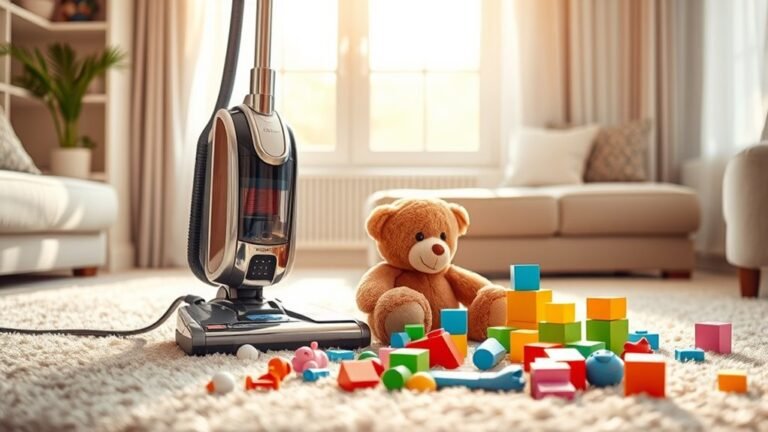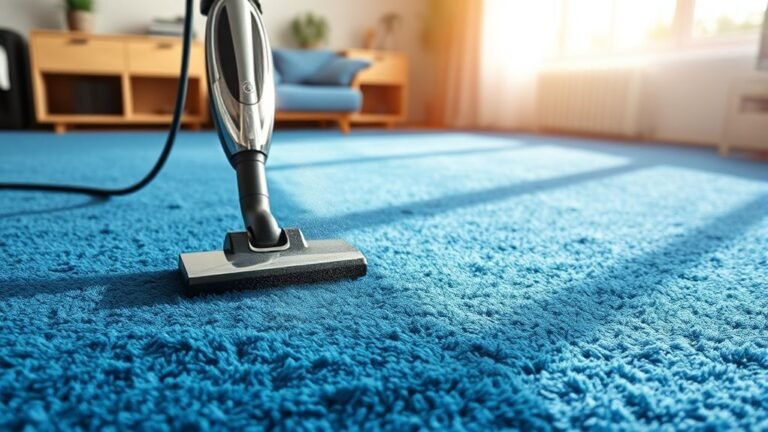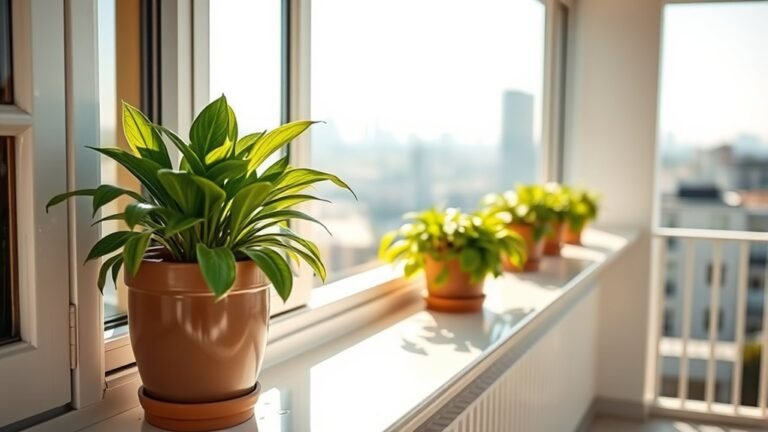Pre-Holiday Cleaning Checklist for Mold
Before guests arrive, inspect mold-prone spots like bathrooms, basements, and kitchens, especially under sinks and behind cabinets. Use natural or commercial cleaners to tackle any mold you find, and improve ventilation by opening windows or using fans. Fix leaks promptly and check pipes, roofs, and windows to control moisture. Keep humidity low and dry wet areas quickly for lasting prevention. If you want to protect your home thoroughly, there’s more key advice to help you stay mold-free this holiday season.
Inspect Common Mold-Prone Areas
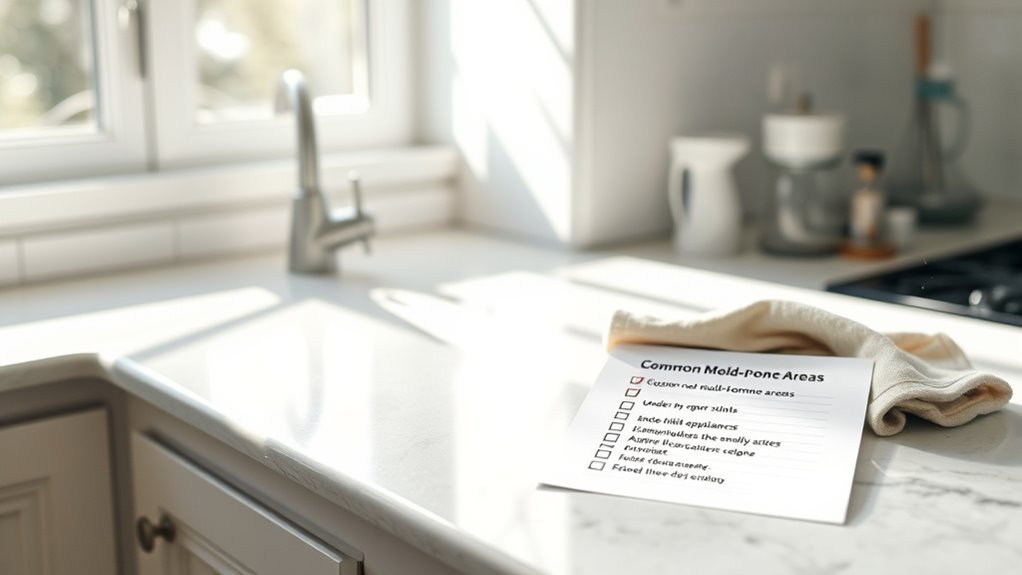
Before the holiday rush begins, you’ll want to inspect common mold-prone areas like bathrooms, basements, and kitchens. Mold loves hiding in spots you might overlook, such as behind kitchen cabinets or under sinks. Take a close look inside your kitchen cabinets for any signs of moisture or discoloration. Bathrooms are another hotspot—check bathroom tiles carefully, especially around grout lines and corners where water tends to linger. Basements can be damp, so inspect walls and floors for musty odors or visible patches. Staying alert to these areas helps you catch mold early, giving you the freedom to enjoy a healthy, clean home during the holidays. Don’t let hidden mold steal your peace or your guests’ comfort.
Use Effective Cleaning Solutions
While spotting mold is essential, tackling it effectively means using the right cleaning solutions. You want to clear mold without trapping yourself in harsh chemicals or ineffective methods. Whether you lean toward natural remedies or commercial products, choosing a solution that fits your lifestyle is key. Here are your options:
Effective mold removal starts with the right solution—natural or commercial—to suit your needs and lifestyle.
- Natural remedies: Vinegar, baking soda, or tea tree oil offer mold-fighting power without toxins.
- Commercial products: Mold-specific sprays and cleaners deliver fast, reliable results when time’s tight.
- Combination approach: Use natural solutions for small spots and commercial products for stubborn infestations.
Improve Home Ventilation
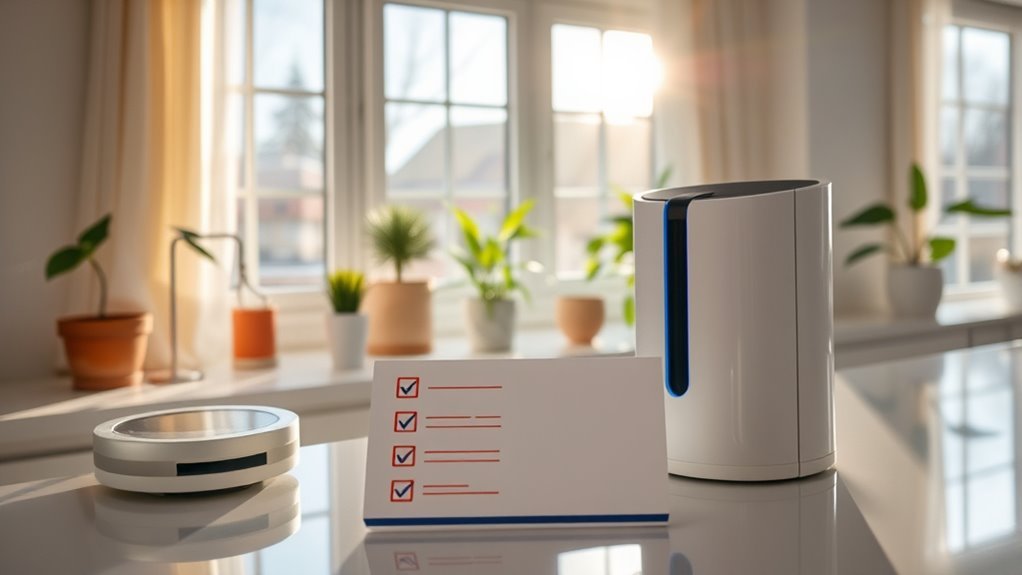
Choosing the right cleaning solutions helps you tackle mold effectively, but preventing mold from returning often depends on how well your home breathes. Improving your home’s ventilation is key to maintaining freedom from mold. Start by maximizing air circulation—open windows and doors whenever possible to let fresh air flow through. Use fans to encourage movement in stagnant areas, especially in rooms prone to humidity. Let natural light flood your space; sunlight discourages mold growth and keeps your home feeling open and invigorating. Consider installing vents or exhaust fans in bathrooms and kitchens to reduce moisture buildup. By enhancing ventilation, you create an environment where mold struggles to thrive, giving you the freedom to enjoy a cleaner, healthier home all year long.
Address Moisture and Leaks
Since mold thrives in damp environments, addressing moisture and leaks is essential to keep your home mold-free. You want to take control by identifying and fixing any moisture sources that could invite mold growth. Start with thorough leak detection—don’t wait for obvious signs like water stains or musty smells. Taking early action saves you from bigger headaches later.
Here’s how to get started:
- Inspect pipes, faucets, and appliances for drips or corrosion regularly.
- Check your roof and windows for gaps where water might sneak in.
- Use a moisture meter to detect hidden dampness in walls or floors.
Maintain Regular Mold Prevention Practices

Even if you’ve addressed moisture issues, maintaining regular mold prevention practices is key to keeping your home safe. You want your space to feel open and fresh, so sticking to consistent cleaning habits is essential. Make it a habit to dry wet areas quickly, ventilate rooms well, and keep humidity levels in check. Regularly inspect hidden spots like under sinks and behind appliances to catch mold early. Using natural cleaners and avoiding harsh chemicals supports a healthier environment and your freedom from harsh toxins. By staying proactive with mold prevention, you avoid the hassle and expense of bigger problems later. Your home should be your sanctuary—maintain it with simple, steady habits that keep mold at bay and preserve your peace of mind all year long.
Frequently Asked Questions
Can Mold Cause Allergies or Respiratory Problems?
Yes, mold can definitely cause allergies or respiratory problems. If you’re sensitive, you might notice mold symptoms like sneezing, coughing, or itchy eyes. Mold acts as allergy triggers that can make breathing tough, especially if you have asthma or other respiratory issues. You don’t have to be stuck feeling bad—knowing this helps you take control and keep your space healthier, so you can enjoy your freedom without the hassle of mold-related problems.
What Types of Mold Are Most Harmful to Health?
When you’re dealing with toxic molds, it’s important to know which types can seriously harm your health. Stachybotrys chartarum, often called black mold, is one of the most dangerous, producing mycotoxins that can cause severe respiratory issues. Aspergillus and Penicillium molds also pose risks, especially if you’re sensitive. Mold identification helps you pinpoint these threats so you can take control and protect your freedom to breathe easy and live well.
How Quickly Can Mold Grow After Water Damage?
Mold growth can start as quickly as 24 to 48 hours after water damage, so you’ve got to act fast. If you let moisture linger, mold spores will settle in and multiply, threatening your health and freedom in your space. Drying out the area quickly is key to preventing mold growth. Don’t wait around—take control by removing water and drying surfaces to keep your home safe and mold-free.
Is Professional Mold Removal Always Necessary?
Think of mold like a sneaky shadow creeping in—sometimes you can handle it yourself. DIY mold removal works for small patches, especially if you’re committed to mold prevention, like fixing leaks and keeping humidity low. But if mold’s spread feels like a wild jungle, professional mold removal is your best bet to reclaim your space. You deserve the freedom to breathe easy without worrying about hidden dangers lurking around.
Can Mold Spread to Furniture and Clothing?
Yes, mold can definitely spread to your furniture and clothing if you’re not careful. To guarantee furniture preservation and clothing protection, it’s important you act quickly once you spot any signs of mold. Mold spores travel easily through the air and settle on surfaces, so keeping your space dry and treating affected items promptly helps you maintain a fresh, mold-free environment without feeling trapped by the problem.




